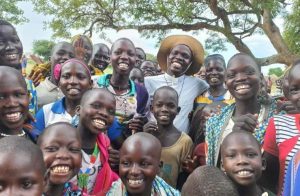Russia, Ukraine, the European Union, and the United States. An intense year of elections in the shadow of Ukraine and the Israeli-Palestinian conflict.
In Russia, at war with Ukraine, presidential elections will be held on Sunday 17 March 2024. The likely scenario is that the war will still be going on and this situation will influence the electoral process, the unlikely second round of which will take place on April 7.
Putin was first elected in 2000, being re-elected for another four years in 2004. From 2008 to 2012 he gave way to Dimitri Medvedev, whom he replaced as prime minister. During this period, the constitution was reformed, with six-year presidential terms and several subsequent re-elections.
Today the Russian president could be re-elected until 2036. The Russian population is 143 million. About 109 million Russians voted in the last presidential elections in 2018. Putin then obtained 76.6% of the votes, in the context of an authoritarian political regime and a minority liberal opposition. Today it is predictable, with the context of the Ukrainian war which has revitalized nationalism, that Putin will win the first round.
As The Economist wrote: “Putin will not have a problem declaring himself the winner of the election. His problems may start afterward, as the futility of his war exposes the hollowness of his triumph”. Meanwhile, Russia’s budget for 2024 shows a 70% increase in military spending, to 6% of GDP and a third of all spending.
Two weeks later, on March 31, presidential elections would take place in Ukraine. According to the Ukrainian constitution, elections will be held on the last Sunday of March of the fifth year of the current presidential term. However, the Russian invasion of the country prompted the introduction of martial law, and Ukraine’s constitution prohibits the holding of elections while this law is in force. This implies that if martial law is still in force by that date, the elections could be postponed and rescheduled. If the elections were held, President Volodimir Zelensky would be elected by a landslide. In the Economist’s Democracy Index, Ukraine ranks 87th, within the group that qualifies as hybrid regimes, the third highest place in the ranking.
The European Union will hold parliamentary elections from 6 to 9 June 2024. Its 27 countries are represented by 705 deputies. It is the largest electorate after India and the first in number of voters for a transnational organization (it has a population of 446 million). The first bloc is that of the People’s Party, with 177 legislators. These are centre-right forces, mostly of Christian Democratic origin. As its first force, it elected the President of the Commission, Ursula von der Leyden, of the German Christian Democrats. Second is the Progressive bloc formed around social democracy, and it has 142 deputies.
Third is Renovating Europe, a moderate centre-right force, with 100, and fourth is the Greens, with 72 seats. Then comes the Group of European Conservatives and Reformists, with 66, followed by Identity and Democracy, seen to be of the far right, with 62 members, and the Confederal Group of the European United Left, with 37. Furthermore, there are 47 independent deputies. Clearly, the right dominates in its various expressions, moderate or extreme.
The central question is how much the bloc of identity and democracy will grow, as it challenges the European Union with varying degrees of emphasis. This current brings together national renewal in the Netherlands, with Geert Wilders, Georgia Meloni’s coalition in Italy, Viktor Orban in Hungary, Marine Le Pen in France, and affirmation of the far-right political party in Germany. It is expected that this group will pick up many seats in the newly expanded 720-strong chamber.
Finally, the United States’ presidential election will be held on November 5, 2024. This country has a population of 328 million. In 2020, 231 million voters were registered for the presidential election. The primary process will be defined in June when it is known who the presidential candidates are. But neither Joe Biden for the Democrats nor Donald Trump for the Republicans seems to be facing rivals of any weight.
For this reason, primaries are held without questions for the presidential formula. Politically, and ideologically, they face a moderate Democrat and a radicalized Republican. Biden is up for re-election, keeping his vice president, Kamala Harris, as his running mate. In the case of his opponent, it is still uncertain who will complement his pairing. But there are many similarities in other fields.
If he took office, Biden would do so at 81 and Trump at 78. There has never been a competition of candidates in America at such an advanced age. It doesn’t seem to be the best for a strongly divided society with the tangible unease generated by various causes. The House of Representatives in which Republicans now have a slight majority will also be fully revamped, as happens every two years. So will a third of the Senate, in which Democrats have the majority by a slim margin. On the same date, governors will also be elected in eleven states and two territories. (Open Photo: 123rf, Pixabat, swm) – (Rosendo Fraga/Nueva Mayoria)






